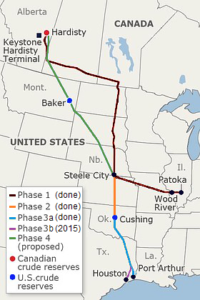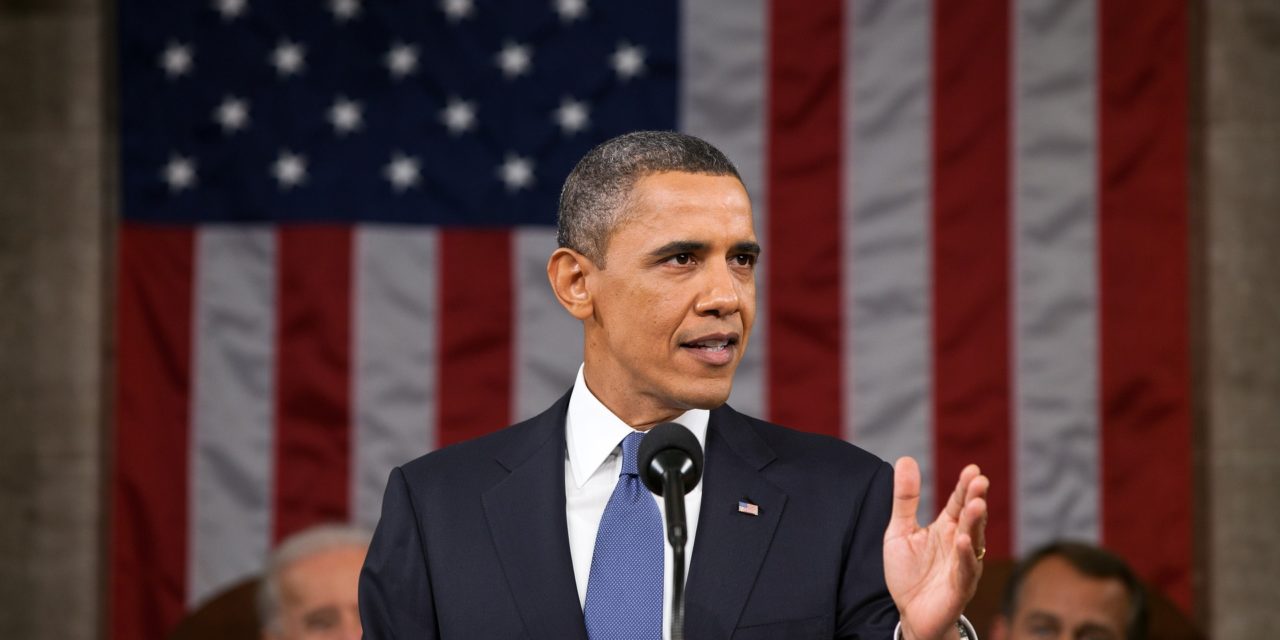When we last discussed the contentious pipeline extension project, President Obama and the State Department had made it clear that they would not be issuing a decision on the Keystone XL Pipeline anytime soon, and the U.S. Senate Energy and Natural Resources Committee had passed a bill to allow construction of the Keystone XL Pipeline without President Obama’s signature, but few expected Congress to vote on the bill.

Keystone Pipeline route (Keystone XL in green) courtesy of Wikipedia user Meclee, CC BY-SA 3.0.
As it turns out, the original bill did not progress, but other bills to push the Keystone Pipeline project forward have had somewhat better success. Republicans had made it clear that the project would be one of their priorities once the new Congress takes power, but thanks to a power struggle in Louisiana, both the House and Senate voted last month on S. 2280/H.R. 5682: A bill to approve the Keystone XL Pipeline.
Louisiana Democratic Senator Mary L. Landrieu campaigned hard for the bill in an attempt to save her Senate seat from Republican challenger Representative Bill Cassidy (Louisiana will hold a runoff vote between the two on December 6). Cassidy sponsored the House bill and has been credited with shepherding it to its 252-161 win, but once again, the Senate failed to pass approval for the pipeline, despite a Democrat working hard to gather the necessary votes. In the end, 14 Democrats joined all 45 Republicans in favor of approving TransCanada’s Keystone XL Pipeline project, but the 59-41 vote with was just shy of the 60 votes required for the legislation to advance.
Although approval of the pipeline has once again been delayed, Republicans should have the required 60 votes to pass the bill next year when the new Congress convenes. The big question is whether they will have the 67 votes needed to override a veto by Obama.
Obama has been pushing off his own decision on the pipeline for years while several studies were completed on the potential impacts of the project, studies needed to meet National Environmental Policy Act (NEPA) requirements. The Final Supplemental Environmental Impact Statement for the Keystone XL Project was published in January 2014 and the public comment period ended on March 7, 2014, but the administration has refused to make a final decision until one sticking point is resolved: a lawsuit making its way through the courts in Nebraska.[1]
Three Nebraska landowners along the proposed pipeline route sued over a state law that let Governor Dave Heineman approve the route the pipeline would take. The key issues that the state Supreme Court must decide are whether the landowners have legal standing to bring the lawsuit and whether the Nebraska Legislature violated the state constitution when it passed the law that allowed the governor to approve the pipeline route through the state. The Court is expected to rule in the next few weeks, but until that time, any bills passed by Congress will have no effect.
The Wall Street Journal recently listed three possible outcomes of the lawsuit:
- The law stands and the State Department and ultimately President Obama will have to decide whether to approve the pipeline.
- The law is declared unconstitutional and TransCanada would have to submit their plans to a new review process with Nebraska’s Public Service Commission. If that happens, the pipeline could be delayed a year or more. And if any significant changes are required, it could trigger the need for the U.S. Department of State to conduct additional NEPA review.
- The Court could force the state legislature to review some of the laws it has passed since 2011, which would leave the pipeline project indefinitely suspended.
For now, both proponents and opponents of the pipeline extension are watching Nebraska and Washington D.C. to see how the battle will play out. Keep an eye out for updates as they happen.
[1] Thompson v. Heineman, S-14-000158, Nebraska Supreme Court (Lincoln).






Recent Comments